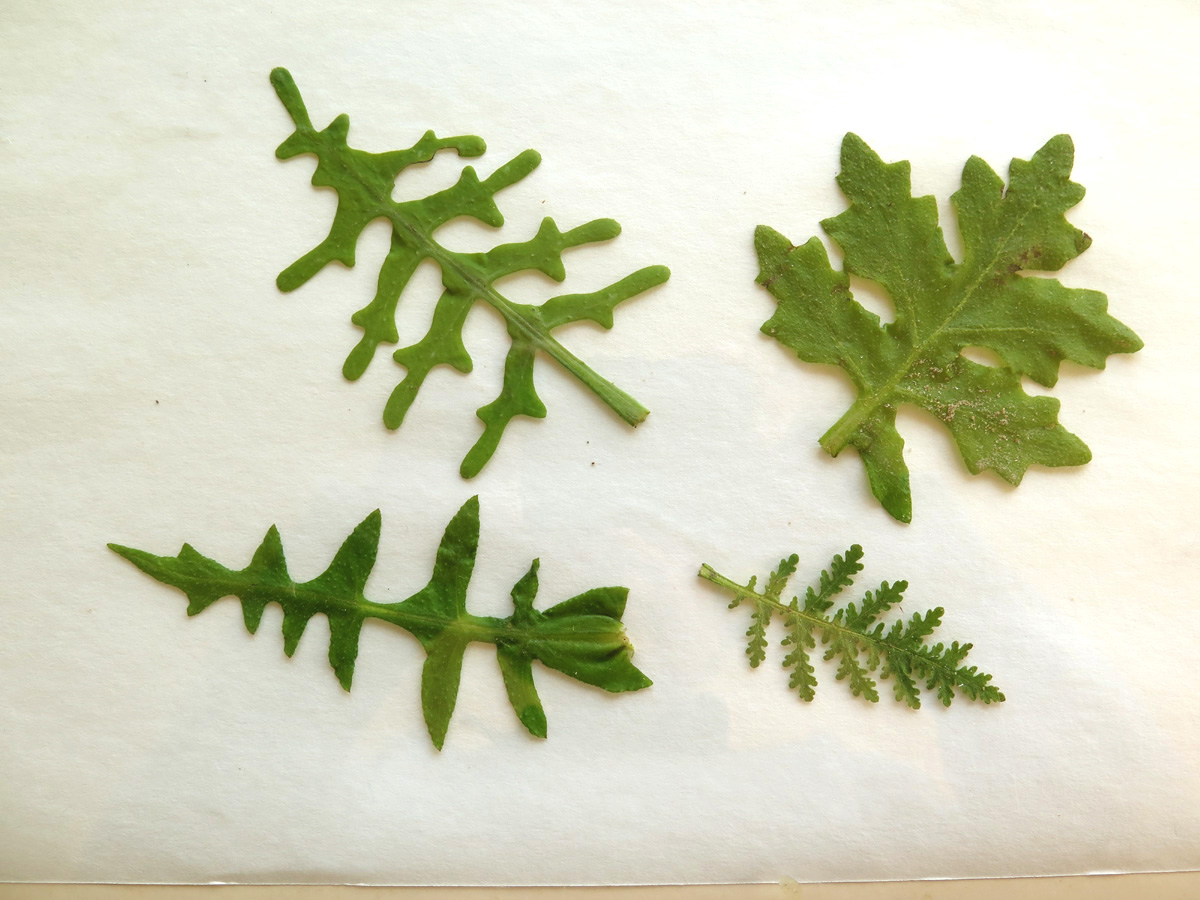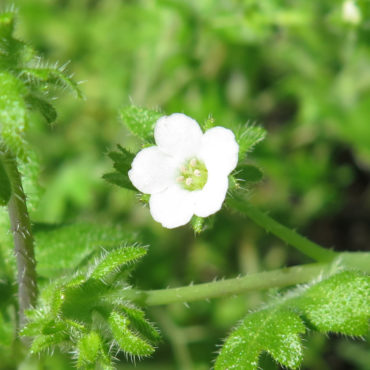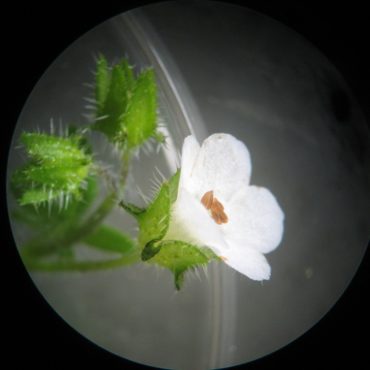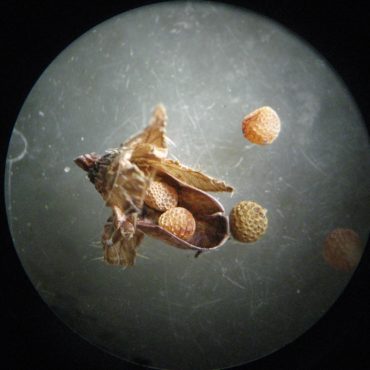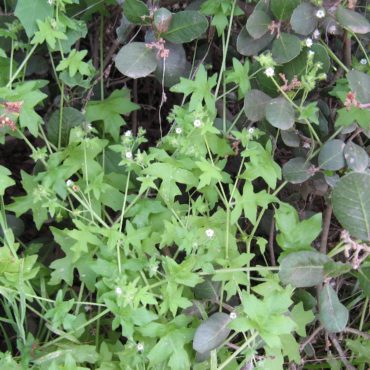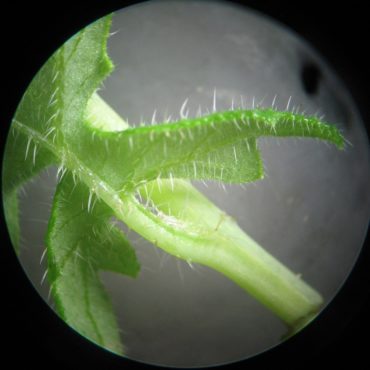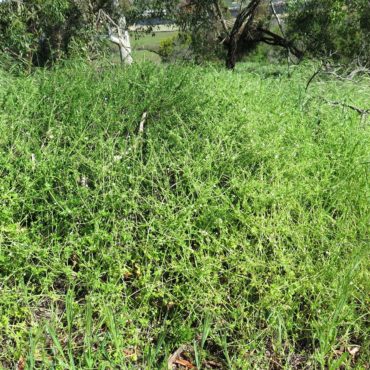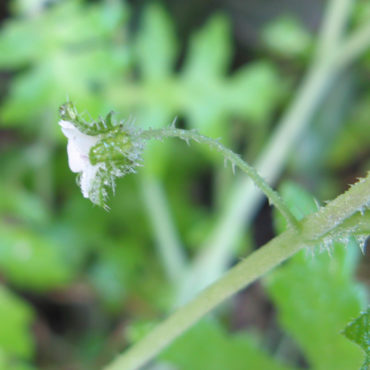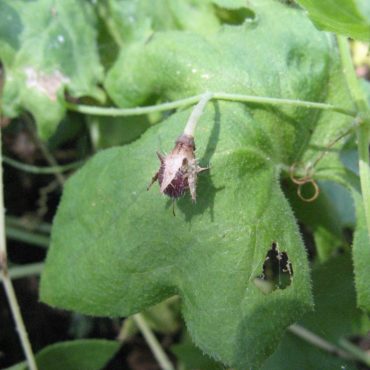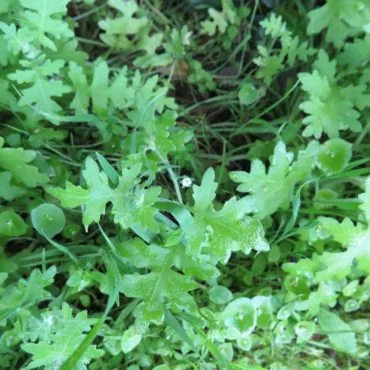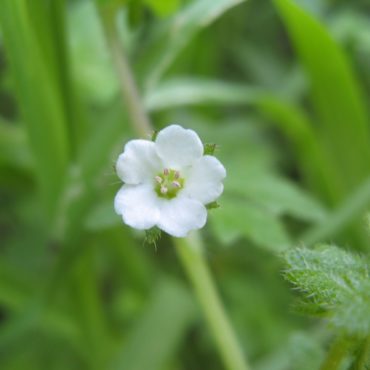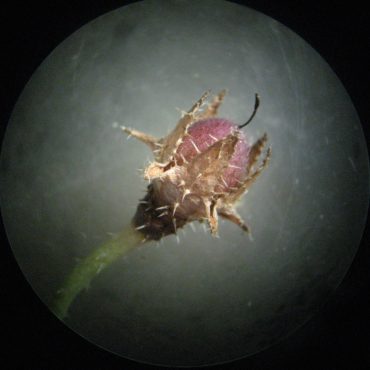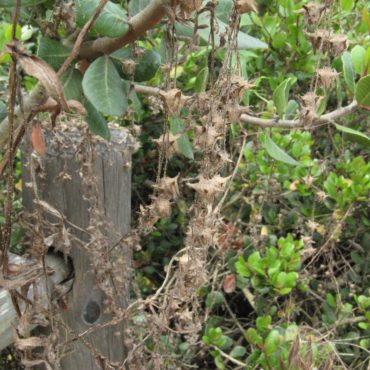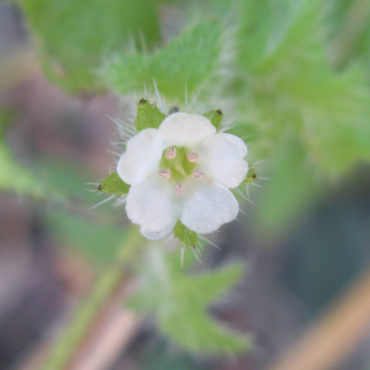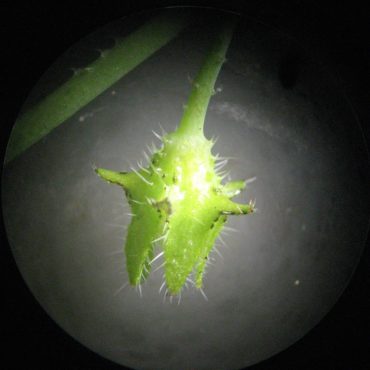There are two spring-blooming, sprawling plants of shady or moist places with very small flowers and the same two common names: white fiesta flower, Pholistoma racemosum (also called San Diego fiesta flower) and San Diego fiesta flower, P. membranaceum (also called white fiesta flower). These plants are similar and easily confused. In addition, common eucrypta (Eucrypta chrysanthemifolia) shares many of the obvious characteristics, and purple-flowering fiesta flower, when not in bloom, is similar to the San Diego fiesta flower.
A quick way to distinguish these is by means of their mature foliage. The white fiesta flower (upper right) is pinnately lobed into broad lobes, which may, in turn, have a few secondary lobes or large scallops. In contrast, the San Diego fiesta flower(upper left) and the fiesta flower (lower left) have leaves that are deeply, pinnately lobed into narrowly lanceolate segments.
All Pholistoma species are weak, vining herbs that have downward-pointing hairs that help them grab onto surrounding surfaces and often feel like Velcro©.
The fourth plant, common eucrypta (lower right) is a small sub-shrub. Its leaves are more finely divided; the primary lobes have secondary lobes and even tertiary lobes or scallops. Common eucrypta lacks the hairs that give the others their grabby feeling.

